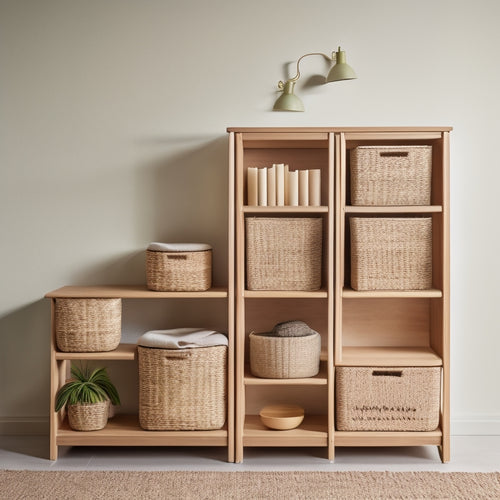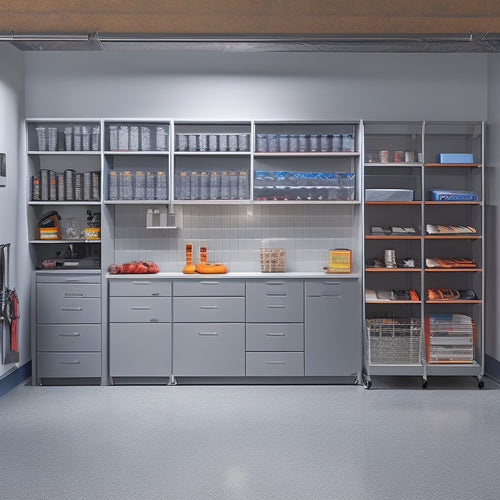
3 Essential Key Storage Tips for Electricians
Share
You need a well-organized key storage system to efficiently manage your keys, reduce downtime, and stay focused on your electrical work. First, categorize your keys by type, such as residential, commercial, or industrial, to quickly locate the right key for the job. Next, implement a key tracking system to prevent loss and consider a key duplication service for spare keys. Finally, label your keys with clear, descriptive tags and consider a color-coding system to quickly identify corresponding locks or devices. By following these essential tips, you'll be able to streamline your workflow and release more efficient project management.
Key Takeaways
• Organize keys by category (residential, commercial, industrial) to quickly identify and access the right keys for each project or client.
• Implement a key tracking system to monitor key usage, prevent loss, and reduce delays on the job site.
• Label keys with clear, descriptive tags and implement a color-coding system to easily identify corresponding locks or devices.
• Create spare keys for critical locks and invest in a key duplication service to avoid project delays.
• Keep a log of key usage to identify potential issues, prevent unnecessary key replacements, and streamline key management.
Organizing Keys by Category
Categorizing your keys by type, such as residential, commercial, or industrial, enables you to quickly locate the right key for the job. This is an important step in effective key management, as it saves you time and reduces frustration on the job site.
By organizing your keys into separate categories, you can easily identify which keys belong to which projects or clients. For instance, you can store all your residential keys in one section, and your commercial keys in another. This system also helps you keep track of which keys are currently in use and which ones are available.
Effective key organization is vital for electricians who work on multiple projects simultaneously. By keeping your keys organized, you can focus on completing tasks efficiently and providing excellent service to your clients. Remember, a well-organized key system is a key to your success as an electrician.
Securing Keys to Prevent Loss
Once you've categorized your keys, it's equally important to secure them to prevent loss, as a missing key can delay projects and impact your bottom line.
You can't afford to waste time searching for misplaced keys or replacing them unnecessarily. To avoid this, implement a key tracking system that allows you to monitor key usage and identify potential issues before they become major problems. This can be as simple as keeping a log of who's which keys and when they're due back.
You should also consider investing in a key duplication service to create spare keys for critical locks. This way, if a key goes missing, you can quickly replace it and get back to work.
Labeling Keys for Easy Access
Label your keys with clear, descriptive tags to guarantee you can quickly identify the corresponding lock or device, saving you time and reducing frustration on the job. This is especially important when working on complex electrical systems, where every minute counts. By labeling your keys, you'll avoid the hassle of trying multiple keys to find the right one, and you'll be able to focus on the task at hand.
To take your key labeling to the next level, consider implementing a color-coding system. Assign a specific color to each type of key, such as red for circuit breakers or blue for electrical panels. This visual cue will help you quickly identify the key you need, even in a crowded key ring or storage container.
Additionally, consider including additional information on the label, such as the location or device the key corresponds to. By following these key labeling tips, you'll be able to work more efficiently and effectively, providing better service to your customers.
Frequently Asked Questions
How Often Should I Clean My Key Storage to Prevent Rust?
'You might think cleaning your key storage is overkill, but trust us, it's essential! To prevent rust, you should clean your keys and storage regularly, ideally every 1-3 months, depending on usage and environmental conditions.'
Can I Use a Key Storage System for Non-Electrical Tools?
You can definitely use a key storage system for non-electrical tools, implementing tool organization and security measures to guarantee easy inventory management and efficient equipment maintenance, ultimately saving you time and effort.
Are Key Storage Systems Compatible With All Key Sizes?
You're trying to navigate a puzzle, fitting all your keys together seamlessly. Fortunately, key storage systems are designed to be versatile, accommodating a wide range of key sizes, ensuring organizational efficiency and saving you time.
Can I Customize My Key Storage System for Specific Projects?
When organizing projects, you can customize your key storage system to boost efficiency, ensuring you'll always have the right keys on hand. Plus, customize security settings to restrict access and protect sensitive project areas.
Are Key Storage Systems Suitable for Outdoor or Job Site Use?
Imagine yourself on a rainy job site, keys exposed to the elements. You'll be glad to know that weather-durable key storage systems are designed for outdoor use, prioritizing job site safety by keeping keys organized and protected.
Related Posts
-

Open Storage Bins for Shelving Units
You need open storage bins that integrate seamlessly with your shelving units to boost your organization, productivit...
-

Building a Garage Storage System With Built-Ins
You're about to build a garage storage system with built-ins that fits your unique needs, starting by evaluating your...
-

Benefits of Pegboard Racks in Your Garage
By installing a pegboard rack in your garage, you'll reveal a wealth of benefits that change your workspace into a hi...


